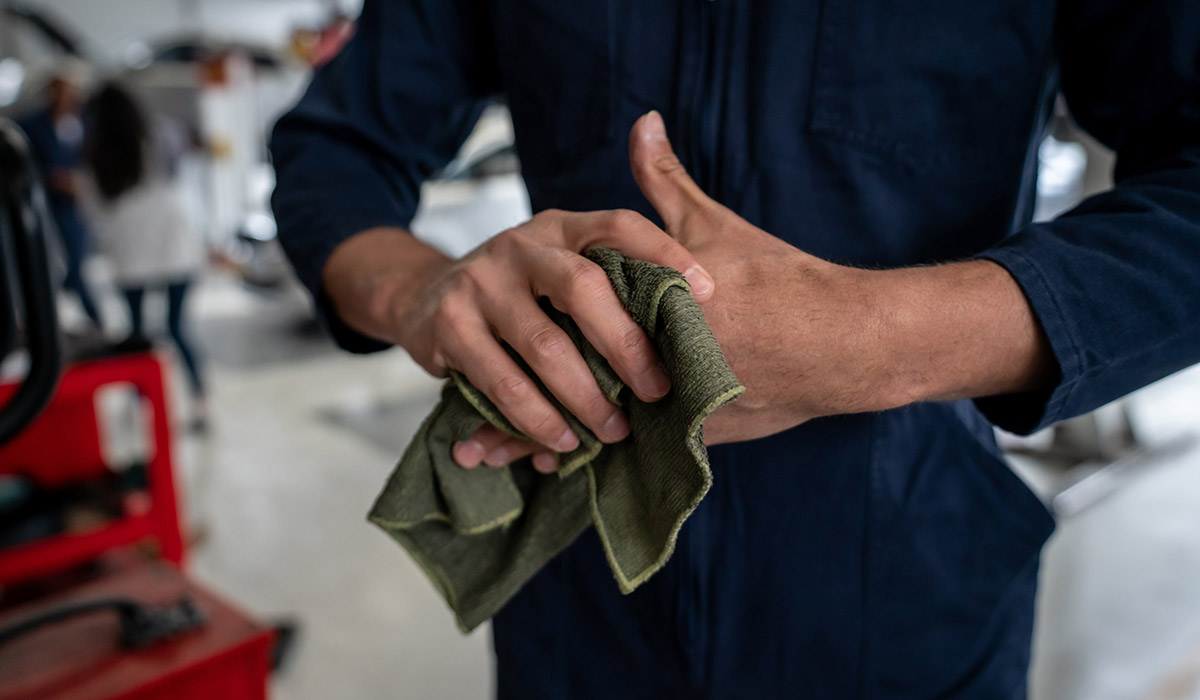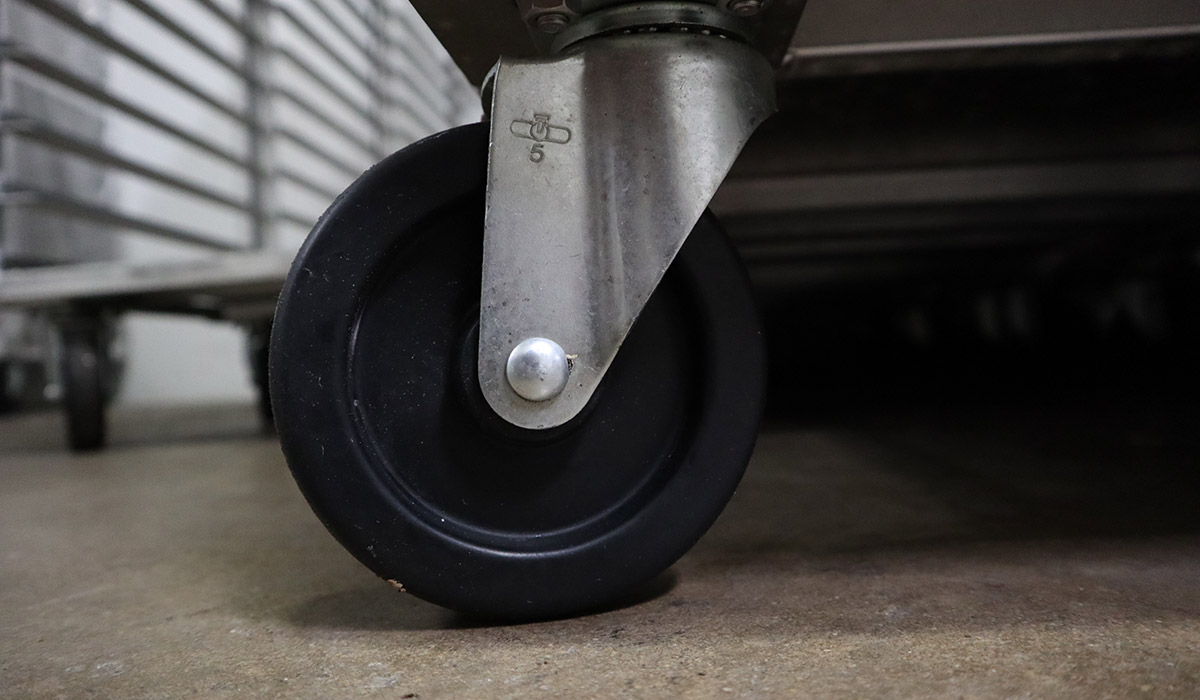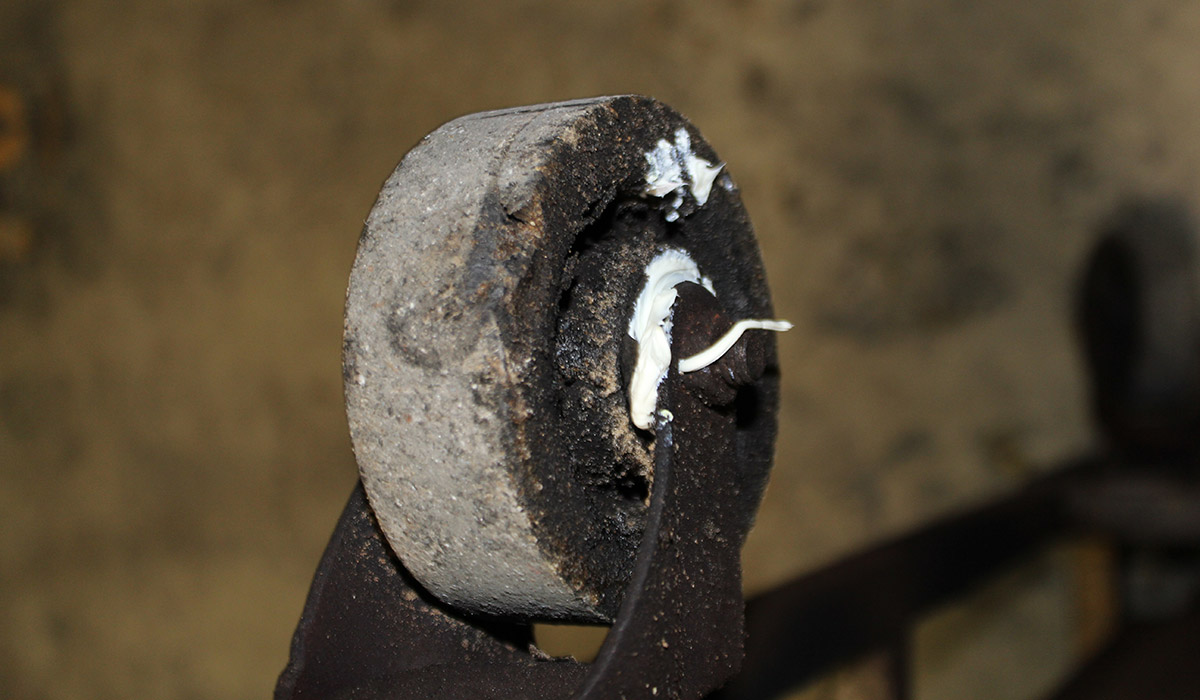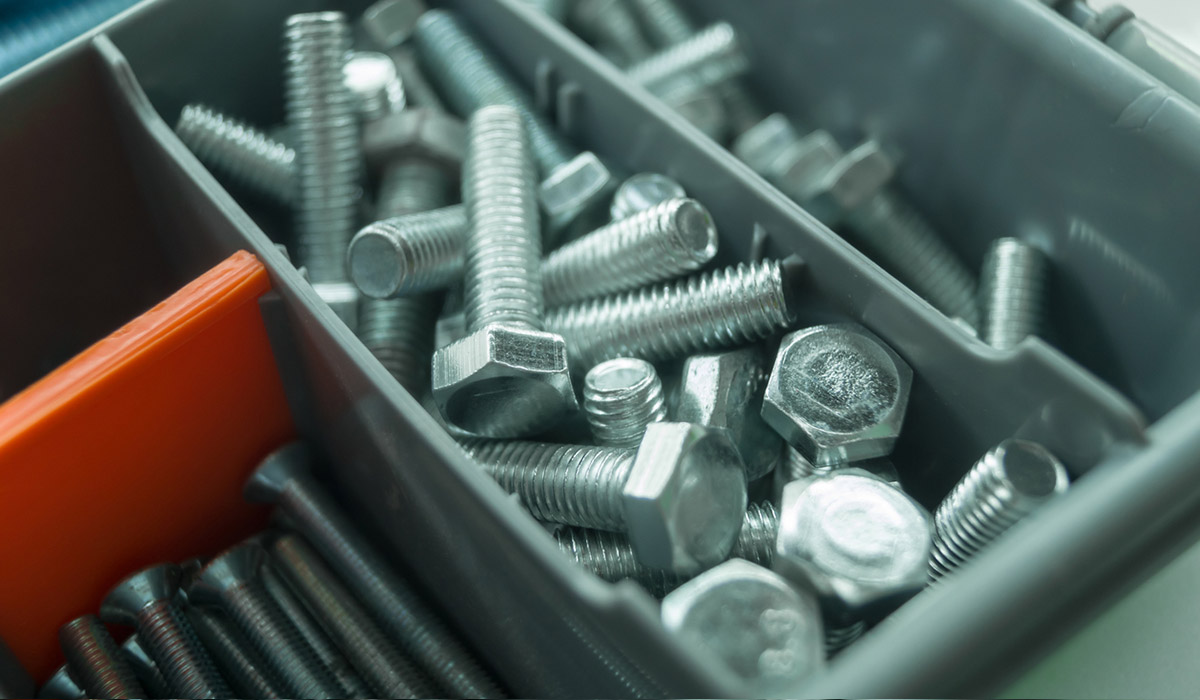
Here at Schaumburg Specialties, if there’s one thing we know, it’s casters and wheels. As manufacturers of the highly popular SHOPCraftⓇ brand of wheelable food production equipment, we’re often approached by customers who need tips on how to maintain high-temp wheels & casters. In the latest addition to our Learning Center, we’re doing just that; sharing advice on keeping these components clean, smooth-moving and ready to perform. Follow our advice to the word – you’ll thank us later!
Over our many years in the metal fabrication business, we’ve encountered lots of misunderstanding and confusion around these components. Before we delve into our advice, let’s take a close look at these parts, clearly explaining the difference between a caster and a wheel – two separate components with their own mechanics:
- Caster: A caster consists of pivoting rollers which can be attached to the bottom of something (such as an oven rack, a cart or a trolley) to allow easy movement. Casters provide a mount/housing for a wheel.
- Wheel: We know this one’s a bit of a no-brainer, but let’s explain it to avoid any confusion. A wheel is a round object with a hole in the middle for an axle or a spindle, and they roll to move objects across the floor. In the context of our products, wheels are housed within a caster.
Casters can be found in virtually any working environment throughout the United States, from office spaces and food production facilities through to aerospace manufacturing and retail. And, like any piece of equipment, these nifty little components require some tender love and care to keep them working in top form – especially when you’re wheeling them in and out of hot ovens or cold freezers all day.
Wheels & Casters: A Quick Care Guide
You wouldn’t neglect to put oil in a car. You wouldn’t wear shoes covered in dirt and grime. So, why let your casters and wheels fall into a state of disrepair?
The fact is that casters and wheels carry the brunt of any heavy weight, and that’s true whether you’re moving trays of donuts or germinating seeds. They can seize up, they can wear down. More frustrating still, these can get flat spots which require a replacement. Who’s got the time to waste on that? Not our customers, that’s for sure!
To avoid getting into these frustrating situations, we’ve got some simple steps that facilities managers and production managers can take, regardless of the environment. Keep reading to learn more!
Step #1: Examine Your Wheels & Casters Thoroughly

Before you decide what kind of action your wheels and casters need, it pays to give them a proper examination. Turn your cart or trolley over on its side so the casters are plainly visible, giving yourself a full view of both components.
Check all your fittings and fastenings and make sure that they aren’t damaged or flattened. If they are damaged or flattened, they will likely generate more unwanted noise when wheeled across your production floor. It’s critical that you take this step first, as worn down fittings and fasteners can eventually destroy the caster itself. Yikes!
Secondly, you’ll need to ensure that your wheel’s tread is up to scratch. Make sure that your tread hasn’t been worn down – if it has, you may need to get some replacement wheels. Our advice is to carry these checks out once a month at the very least!
Step #2: Always Remember to Lubricate

Your casters and wheels are those neat little components that keep your products moving freely and smoothly. With this in-mind, it’s important to remember that lubrication is absolutely crucial.
Proper lubrication ensures that your casters last as long as possible, and if you treat them well you can expect them to last for a relatively long time. In the vast majority of cases, this should be done every six months. It’s worth timing these maintenance sessions for times when production isn’t as busy, so your schedule doesn’t get totally interrupted.
If you use your equipment extremely regularly, you may want to carry out these sessions at more frequent intervals. We recommend high-temperature food grade grease, which has an impressive dropping point of 514 degrees fahrenheit.
When it comes to applying the grease, in some cases you can simply run your fingers through the components. However, to get deep into those little crevices, we recommend using a grease gun – see how the grease looks when it’s applied in the picture above!
Step #3: Keep Spare Parts Nearby

Regardless of how well you look after your casters and wheels, it always helps to keep spare parts handy. It’s highly likely that at some point, you’ll need to replace a part. However, waiting around on a delivery could stand in the way of you meeting a particularly tight production deadline.
Always replace worn out wheels and casters when they become damaged, and ensure you have everything you need to get the job done, including hand tools such as wrenches, screwdrivers and replacement fasteners. By taking this simple step, your production can return to optimum levels whenever your wheels and casters eventually break down. Simple!
Calling All Business Owners: Let’s Produce More Together
Half of the work behind making something is in moving it around your production floor. So why not invest in a durable product that’s easy to transport from location to location? To get started with your own custom equipment project, contact us today. Alternatively, you can submit your own drawings for a free quote.